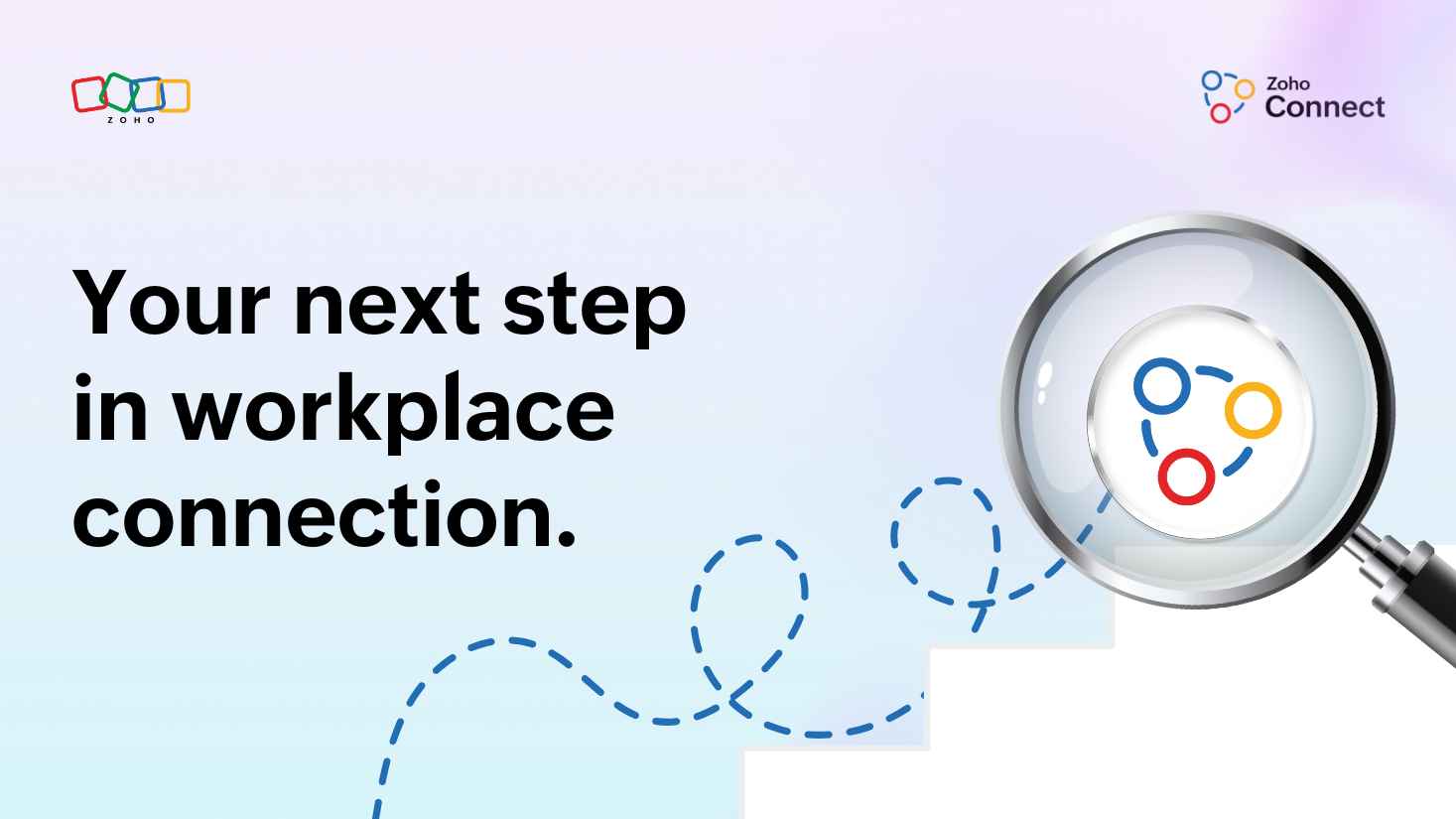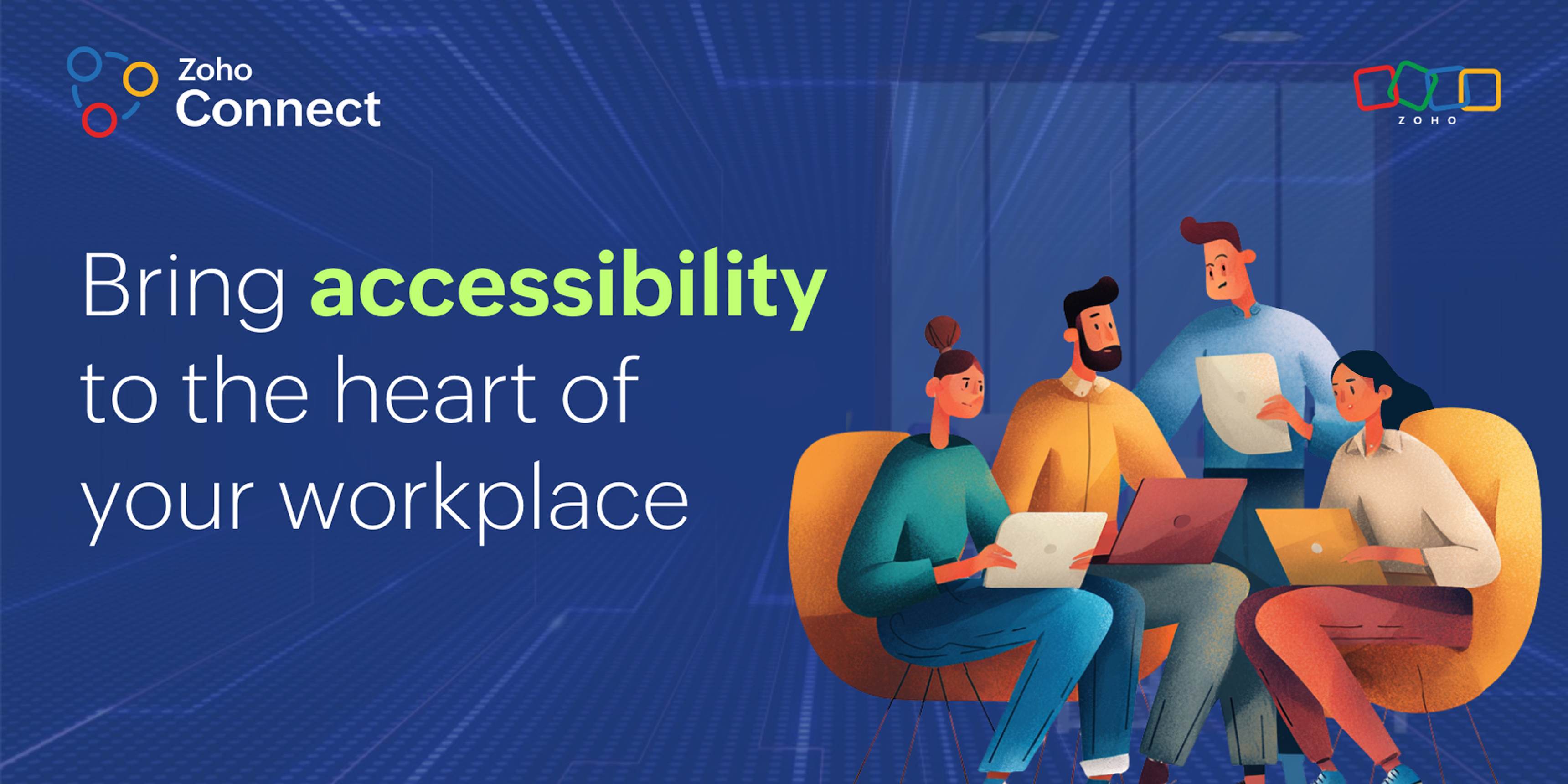- HOME
- More
- Employee Experience
- How to help your employees embrace a new EX platform
How to help your employees embrace a new EX platform
- Last Updated : November 21, 2024
- 200 Views
- 5 Min Read

Migrating to a new employee experience (EX) platform can be transformative for any organization, bringing new possibilities for communication, collaboration, and engagement. However, any big change can be met with hesitation and uncertainty, especially when it requires employees to learn a new system. If you're introducing a new EX platform, like Zoho Connect, the process can become a positive journey that strengthens your organization’s culture and enhances productivity—when you approach it the right way.
From sharing clear benefits and offering hands-on support to building an inclusive feedback culture, a thoughtful onboarding approach can help your employees adapt quickly and feel empowered on the new platform. Let’s explore some practical tips to help your team embrace the switch and get the most out of your new EX platform.
1. Communicate the “Why” and the “How.”
The key to a smooth transition begins with transparency. Your employees need to understand why the change is happening, how it benefits them, and how it aligns with the company’s goals. Without this clarity, employees may feel like the platform is just another tool to learn—one that may disrupt their routine or require extra effort. Here’s how to tackle this phase effectively.
Explain the benefits: Show them how the platform will make their lives easier—whether it’s more efficient communication, easy access to resources, or new features that improve collaboration.
Connect it to company goals: Emphasize how the platform will help the company achieve its vision. For example, if you’re aiming for a more engaged, productive workforce, highlight how the EX platform plays a role.
Use multiple channels: Deliver the message through emails, presentations, and announcements during team meetings. This ensures everyone is well-informed and feels part of the process.
2. Offer hands-on training and resources.
Training is crucial to help employees become comfortable and confident with the new platform. The training program should be tailored to the needs of your team, accessible, and engaging. Here are some effective ways to get started.
Create a structured training program: Organize sessions by department or role, so each team gets relevant training for the features they’ll use most.
Leverage multiple formats: Use video tutorials, written guides, and live demos to cater to different learning styles.
Offer self-paced learning: Not everyone will feel comfortable learning at the same speed. Make sure training resources are accessible anytime, so employees can learn at their own pace.
Provide hands-on practice: Build in time for employees to experiment with the platform in a test environment. Let them try the features without pressure, which can boost their confidence.
3. Appoint platform ambassadors.
Appointing platform ambassadors or "EX Champions" can ease the transition by creating a sense of peer support. These ambassadors are employees who receive in-depth training on the new platform and can act as go-to experts within the team. They can provide real-time guidance, offer encouragement, and help address minor issues before they escalate.
Choose enthusiastic, tech-savvy employees: Select ambassadors who are comfortable with technology and enthusiastic about the new platform.
Encourage peer training: When employees have a familiar face to turn to, they may feel more comfortable asking questions.
Promote regular check-ins: Ask ambassadors to check in with team members regularly, ensuring that everyone feels supported and can ask questions as they arise.
4. Encourage engagement through gamification and rewards.
Incentives can make the learning process fun and motivate employees to explore the platform on their own. Introducing gamified elements like challenges, rewards, or badges can help keep engagement high and add a playful element to the adoption process.
Launch “First Steps” challenges: Create a checklist of initial actions to complete on the new platform, such as updating profiles, joining groups, or crafting posts.
Offer rewards for engagement: Recognize employees who actively participate in using the new platform. Small rewards like gift cards or shoutouts can be powerful motivators.
Organize friendly competitions: Divide employees into teams and see which team can complete the most platform-related tasks in a week. This adds a layer of excitement and camaraderie to the process.
5. Promote two-way feedback.
The best way to understand how employees feel about the new platform is to encourage open, two-way feedback. Employees may encounter issues or have suggestions that can improve the experience for everyone. By actively listening to feedback, you demonstrate that their input matters.
Schedule regular check-ins: Hold quick meetings to gather feedback and answer any questions.
Implement surveys and polls: Short surveys can help you gauge overall sentiment and identify areas for improvement.
Act on feedback: When possible, address the feedback you receive. This could mean adjusting workflows or enhancing certain features.
6. Offer ongoing support.
Employees will continue to encounter questions or challenges long after the initial launch. A responsive support system ensures that they always have access to help when they need it.
Set up a help desk or chat support: If possible, dedicate a channel for EX support where employees can reach out with questions.
Provide a resource library: Host a collection of resources—such as FAQs, tutorials, and guides—that employees can access anytime.
Share platform updates regularly: Keep employees in the loop about new features, fixes, and enhancements. This shows that the platform is evolving to meet their needs and keeps them engaged.
7. Lead by example.
Leaders play a key role in encouraging platform adoption. When management actively uses the platform, employees are more likely to follow suit. Leaders should set the tone by posting updates, sharing insights, and interacting with employees through the new system.
Demonstrate platform use: When leaders regularly communicate and share updates on the platform, employees see it as a valuable tool rather than just another mandate.
Celebrate milestones: Recognize team members who are early adopters or make significant contributions to the platform.
Share success stories: Show the positive impact of the platform on communication and team cohesion.
8. Be patient and embrace a gradual transition.
It’s important to remember that full adoption won’t happen overnight. Employees will adapt at their own pace, and there may be some initial bumps along the way. Encourage gradual, organic use of the platform to avoid overwhelming your employees.
Set realistic expectations: Acknowledge that a learning curve exists and that it’s okay if employees take time to adjust.
Celebrate small wins: Each step forward, no matter how small, is worth celebrating. Recognize milestones and keep morale high.
Encourage consistent use: Highlight how the platform can improve day-to-day tasks, so employees are more inclined to use it consistently.
Wrapping up
A new EX platform can truly transform the way your employees connect, collaborate, and work. By guiding your employees through a smooth transition, you’re setting up both your team and your organization for greater success. Remember, the goal isn't just to adapt to a new platform, but to empower employees to embrace it fully.
With Meta Workplace stepping back, now is an ideal time to take a step forward with Zoho Connect. Designed to grow with your organization, Zoho Connect enhances communication, fosters collaboration, and brings your employees closer together.
Make the switch to Zoho Connect and watch your organization build stronger connections and new possibilities, paving the way for a productive and engaged future.


